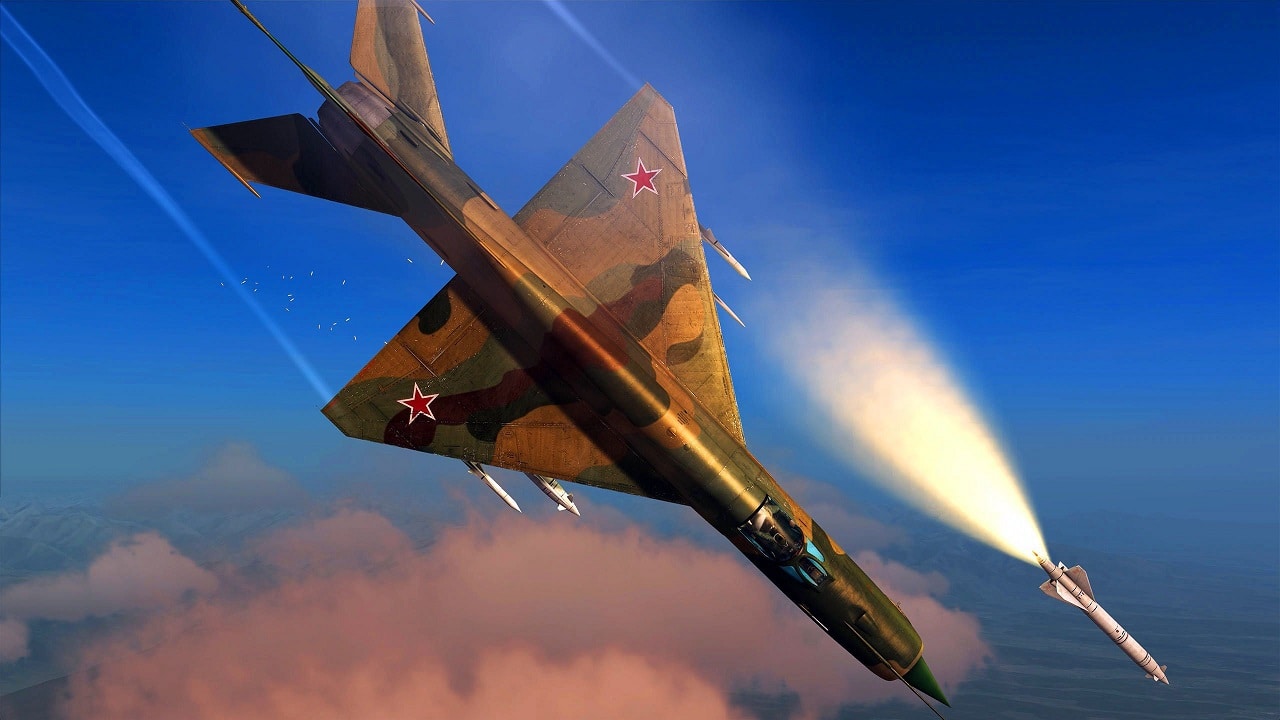The MiG-21 has flown with as many as 60 different countries after emerging from the former Soviet Union in 1955, and the aircraft is still in service today.
The aircraft has existed in many variants over a period of many years and has been upgraded substantially by various customers.
In total, as many as 11,000 MiG-21s were built with more than 10,000 built in the former Soviet Union.
The aircraft is no longer produced, yet the sheer scale of the production effort from the Soviet Union reached many countries over a period of decades. The aircraft became the most-produced jet aircraft in aviation history and the longest production run of any combat aircraft until surpassed by the U.S. F-15 and F-16.
The aircraft is quite fast, particularly for an aircraft engineered in the 1950s, as it can reach speeds of Mach 2. This is in large measure due to its lightweight design and turbo-jet propulsion, yet the MiG-21 has a poor thrust-to-weight ratio when compared with other aircraft such as the F-15.
The MiG-21’s thrust-to-weight ratio is listed as .76, an amount considerably lower than the Su-35 and F-15, listed with a rato of 1.3 and 1.29 respectively. While much lighter weight than an aircraft such as an F-15, the MiG-21 has a much lower thrust-to-weight ratio because its engines generate a much lower amount of thrust or propulsion power when compared with an F-15 engine.
For example, the max take-off weight of an F-15 is slated at 68,000 pounds, yet the max take-off weight of the MiG-21 is only 19,000 pounds. The MiG-21 is also known for having a very short range due to its fuel-tank placement and poorly balanced center of gravity.
MiG-21 vs F-15
How then, does an F-15 have more speed and a better thrust-to-weight ratio when it is so much heavier? The answer can be seen clearly in the thrust power of each aircraft, as the F-15 is a dual-engine aircraft powered by two Pratt & Whitney F100-PW-220 afterburning turbofans, whereas a MiG-21 is powered by only one R-25-300 afterburning turbojet. The F-22 is also a dual-engine aircraft with an amazing thrust-to-weight ratio, as it can take off at a max weight of 83,000 pounds.
Beyond the Soviet Union, India was the largest user of the MiG-21 and the aircraft was used in the early 1970s in the Indo-Pakistan war. The aircraft has also been used widely in Eastern Europe, the Middle East, and places such as Vietnam. Iraqi-MiG-21s were shot down during the Iran-Iraq war and MiG-29s were also used in the Libyan civil war, Arab-Israeli wars, and Kosovo in the late 1990s.
Although no longer produced, the MiG-21s are still in service in many countries around the world, a fact which suggests that the Soviet-produced airframe has remained viable throughout many decades.
Kris Osborn is the Military Affairs Editor of 19FortyFive and President of Warrior Maven – Center for Military Modernization. Osborn previously served at the Pentagon as a Highly Qualified Expert with the Office of the Assistant Secretary of the Army—Acquisition, Logistics & Technology. Osborn has also worked as an anchor and on-air military specialist at national TV networks. He has appeared as a guest military expert on Fox News, MSNBC, The Military Channel, and The History Channel. He also has a Master’s Degree in Comparative Literature from Columbia University.
From 19FortyFive
The Second American Civil War Has Begun

